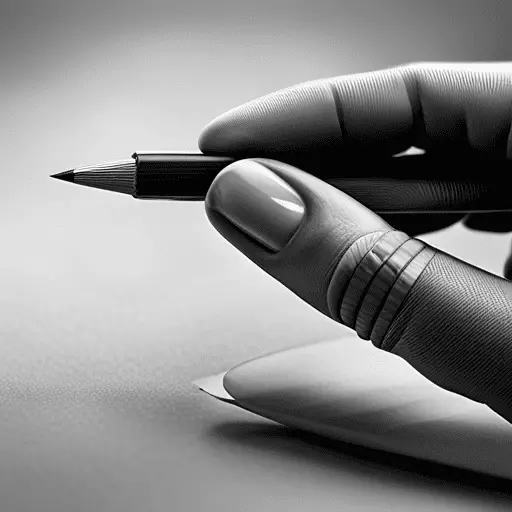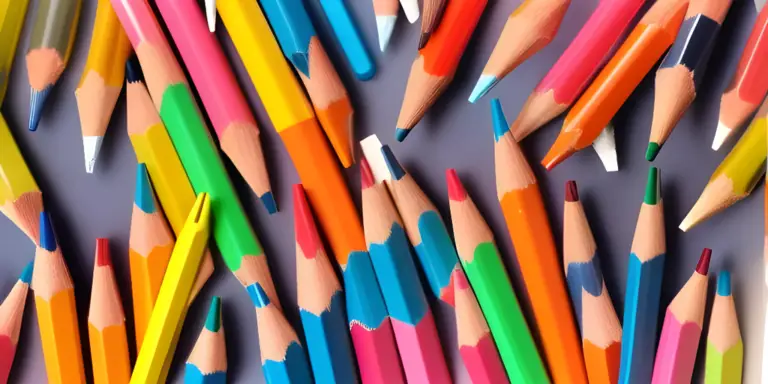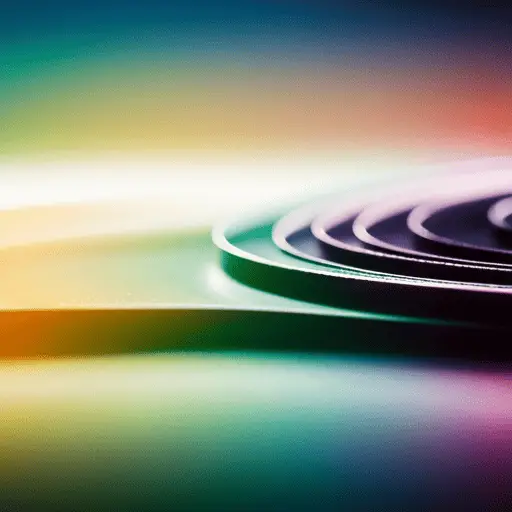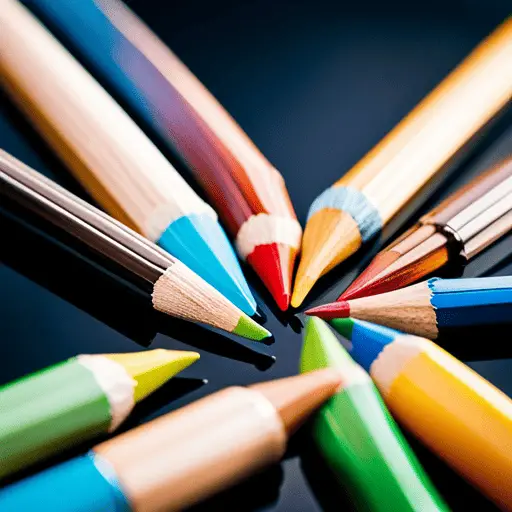A Beginners Guide to Colored Pencils
Are you looking to add a splash of color to your artistic creations? Look no further than colored pencils! With centuries of history, colored pencils have become a staple in the art world and are a versatile medium used by artists of all skill levels.
In this beginner’s guide to colored pencils, you’ll learn about the different types of colored pencils and how to choose the right ones for your artwork. You’ll also discover various techniques for using colored pencils to create stunning art pieces and gain valuable tips to help you improve your skills as a colored pencil artist.
So, grab your pencils, and let’s dive in!
Key Takeaways
- Colored pencils are a versatile medium for artists of all skill levels with a rich history spanning centuries.
- There are two types of colored pencils: wax-based and oil-based, with differences in softness, durability, and blending methods.
- Higher quality pencils have better color range, pigments, and application, with varying opacity, brightness, and saturation levels.
- Colored pencils can be used for a wide range of artistic endeavors, from portraits to everyday sketches, and choosing the right ones involves considering quality and color theory and understanding the blending techniques and effects envisioned.
History of Colored Pencils
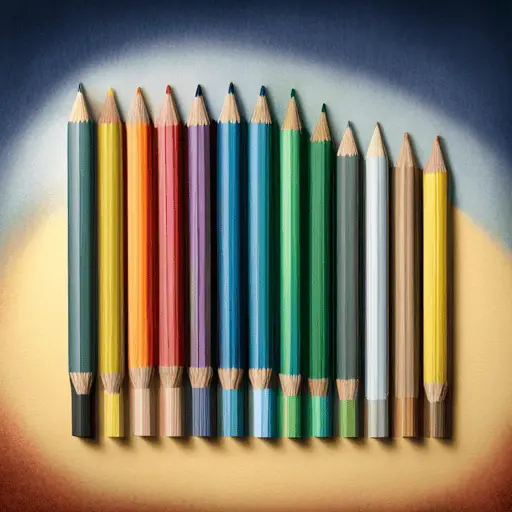
The history of colored pencils dates back to the early 20th century when they were first introduced as an alternative to traditional artist mediums. Since then, colored pencils have evolved, making them an indispensable tool for artists and hobbyists alike.
What started as a simple tool for children’s coloring books has become a staple for professional artists worldwide. Interestingly, colored pencils have also had cultural significance throughout history. In Japan, for example, colored pencils were used to create intricate illustrations for traditional woodblock prints. In Europe, colored pencils were used to create intricate drawings of botanical specimens.
Today, colored pencils continue to be popular for various artistic endeavors. From creating stunning portraits to adding vibrant colors to everyday sketches, colored pencils have come a long way.
Now, let’s explore the different types of colored pencils available today.
Types of Colored Pencils
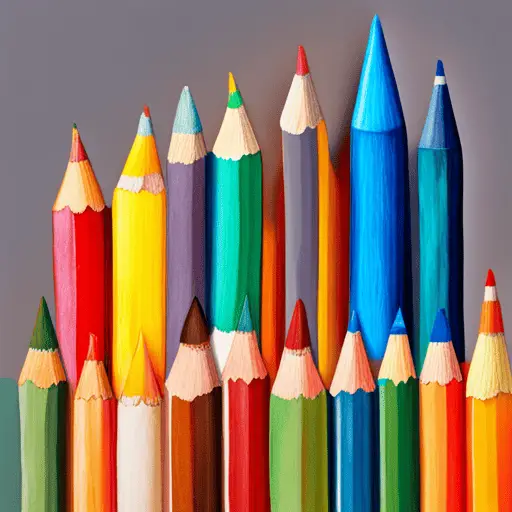
Let’s explore the different colored pencils you can use for your artwork! There are two main types of colored pencils: wax-based and oil-based. Wax-based pencils are softer and easier to blend, making them popular for artists who want to create a smooth and consistent look. They’re also more prone to breakage, so you must be careful when sharpening them. Some popular wax-based colored pencil brands include Prismacolor and Faber-Castell.
On the other hand, oil-based pencils are harder and more durable, making them a good choice for detailed work and layering. They’re also less likely to smudge or smear, which can be advantageous when working on intricate designs. Some popular oil-based colored pencil brands include Caran d’Ache and Derwent.
Both types of pencils can be used for various blending methods, including layering, burnishing, and blending with solvents.
Now that you know about the different types of colored pencils, let’s move on to the next step of choosing the right colored pencils for your project.
Choosing the Right Colored Pencils
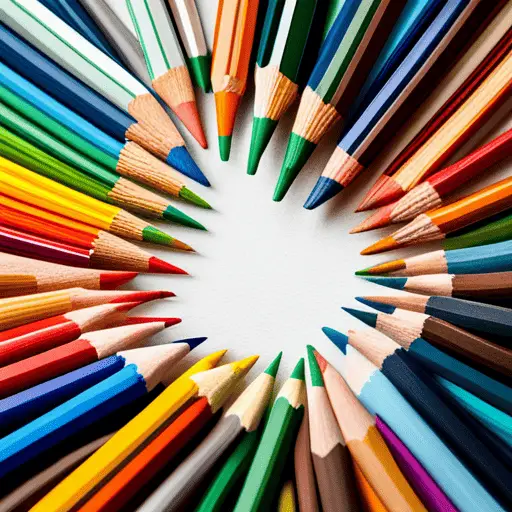
As you embark on your artistic journey, finding the perfect hues to bring your vision to life can be like discovering a treasure trove of creative potential. But with so many options available, it can be overwhelming to choose the right colored pencils for your needs. One important factor to consider is the quality of the pencils, as higher-quality pencils tend to have a better color range, richer pigments, and smoother application.
Another factor to consider is color theory, as different pencils may have varying opacity, brightness, and saturation levels. To help you make an informed decision, refer to the following table, which compares popular colored pencil brands based on their blending techniques and color theory:
| Colored Pencil Brand | Blending Techniques | Color Theory |
|---|---|---|
| Prismacolor | Excellent | High |
| Faber-Castell | Good | High |
| Derwent | Good | High |
| Staedtler | Fair | Medium |
| Crayola | Poor | Low |
By understanding each brand’s blending techniques and color theory, you can choose the pencils that will best suit your needs and create the effects you envision. With the right colored pencils, you can bring your artistic ideas to life in ways you never thought possible. As you move on to the next section about techniques for using colored pencils, you will be equipped with the knowledge needed to unleash your creativity and produce stunning works of art.
Techniques for Using Colored Pencils
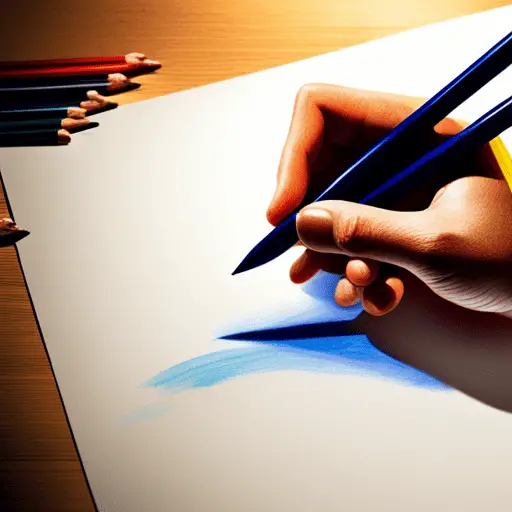
You’ll be amazed at the beautiful effects you can create with these colored pencil techniques. One of the most popular techniques is blending. Blending methods involve mixing two or more colors together to create a smooth transition between them. You can blend colors using your fingers, a blending tool, or by layering colors on each other.
Layering techniques involve applying multiple layers of color to create depth and dimension in your artwork. The more layers you add, the more vibrant and intense the colors become. To achieve the best results, start with lighter colors and gradually build to darker ones.
With these techniques, your colored pencil artwork will come to life in ways you never thought possible. Let’s move on to some tips for beginner colored pencil artists.
Tips for Beginner Colored Pencil Artists
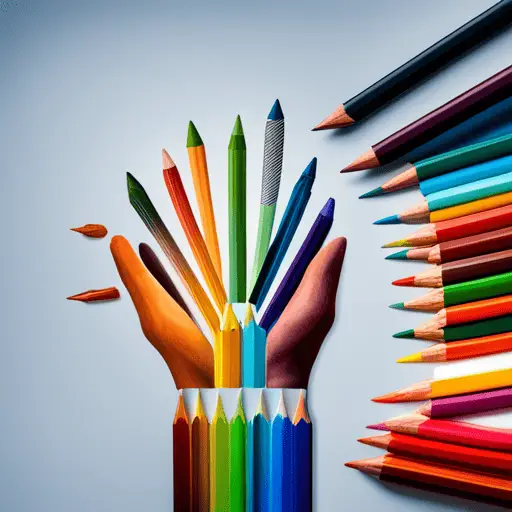
Get ready to unleash a rainbow of creativity with these tips that’ll help you paint a vivid masterpiece with your trusty color sticks. As a beginner colored pencil artist, it’s important to understand the basic techniques you can use to create stunning artwork.
Here are some tips to help you get started:
- Experiment with blending colors to create new shades. Try layering different colors on top of each other and blending them to see what new colors you can create. This will help you create a more dynamic and interesting piece of art.
- Practice layering techniques to create depth and dimension. Start by laying down a base color and then layering different shades on top to create shadows and highlights. This will give your artwork a more realistic and three-dimensional look.
- Use a light touch when coloring to avoid excessive pressure on the paper. This will help prevent the wax from smudging and give you more control over the color intensity. Remember that layering colors is gradual, so slowly build up the color.
By following these tips, you can create beautiful and vibrant artwork showcasing your creativity and talent.
So, grab your colored pencils and start exploring the endless possibilities!
Frequently Asked Questions
Conclusion
Well, congratulations! You’ve made it to the end of this beginner’s guide to colored pencils. You are now a certified colored pencil master, ready to take on the art world with your newfound knowledge.
Just kidding. Let’s be real, you’re still a beginner. But that’s okay! You’ve learned about the history of colored pencils, the different types available, and how to choose the right ones for your needs. You’ve even learned some techniques and tips for using them.
If you’re like me, you’re probably thinking, ‘Wow, colored pencils seem so easy! I can be the next Van Gogh!’ But hold your horses there, Picasso. While colored pencils are a great medium, they require practice and skill. Don’t expect to create a masterpiece on your first try. And please, stay away from those adult coloring books. They’re a scam.
With that being said, don’t let my sarcasm discourage you. Colored pencils are a wonderful tool for expressing creativity and bringing ideas to life. So keep practicing, keep experimenting, and most importantly, have fun!
And who knows, maybe you’ll be the next big thing in art. Or maybe you’ll have a cool hobby. Either way, colored pencils are a great place to start.

